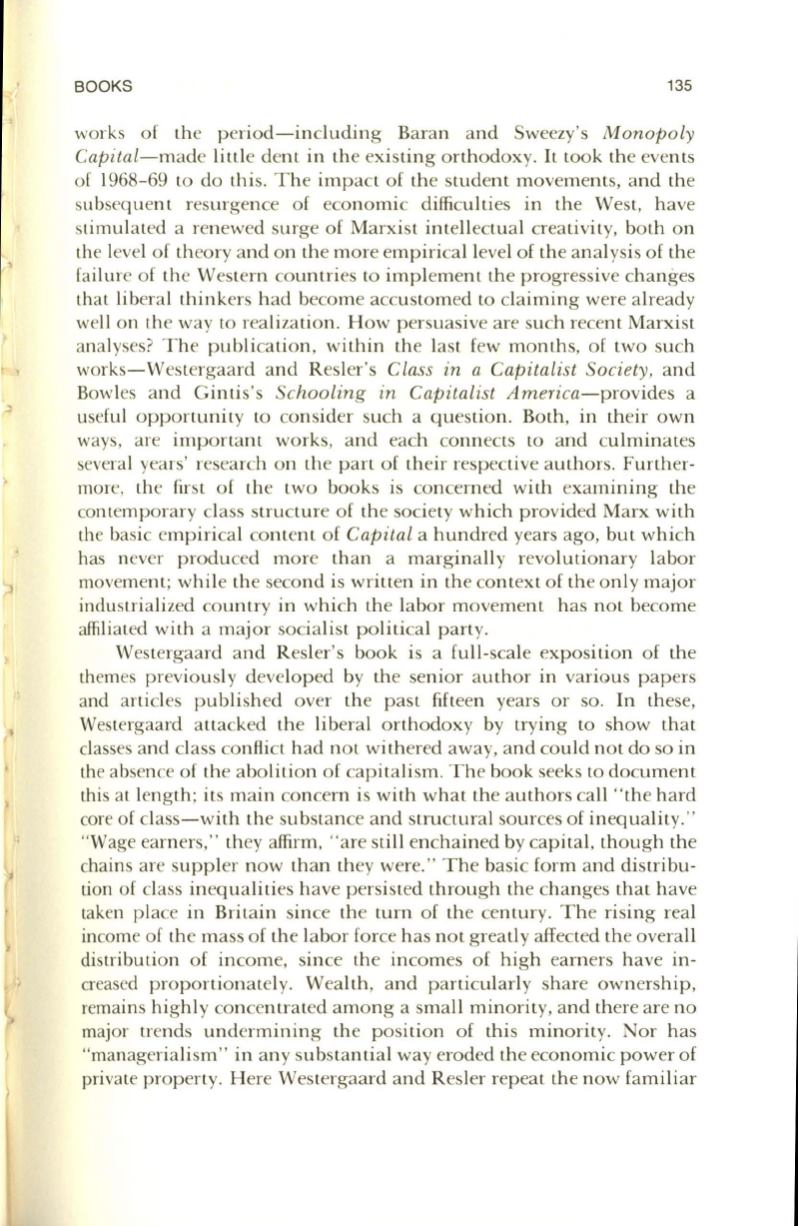
BOOKS
135
works of the period-including Baran and Sweezy's
Monopoly
Capital-made
little dent in the existing orthodoxy.
It
took the events
of
1968-69
to do this. The impact of the student movements, and the
subsequent resurgence of economic difficulties in the West, have
stimul a ted a renewed surge of Marxist intellectual creativity, both on
the level of theory and on the more empirical level of the analysis of the
failure of the Wes tern countries to implement the progressive changes
that libera l thinkers had become accustomed to claiming were already
well on th e way to realization. How persuasive are such recent Marxist
anal yses? The publication, within the last few months, of two such
works-Westergaard and Resler's
Class in a Capitalist Society,
and
Bowles and Gintis 's
Schooling in Capitalist America-provides
a
useful opportunity to consider such a question. Both, in their own
ways, are important works, and each connects to and culminates
several years' resea rch on the part of their respective authors. Further–
more, the first of the two books is concerned with examining the
contemporary class structure of the society which provided Marx with
the basic empirical content of
Capital
a hundred years ago, but which
has never produced more than a marginally revolutionary labor
movement; while the second is written in the context of the only major
industrialized country in which the labor movement has not become
affiliated with a major socialist political party.
Westergaa rd and Resler's book is a full-scale exposition of the
themes previously developed by the senior author in various papers
and articles published over the past fifteen years or so. In these,
Westergaard attacked the liberal orthodoxy by trying to show that
classes and class conflict had not withered away, and could not do so in
the absence of the abolition of capitalism. The book seeks to document
this at length ; its main concern is with what the authors call "the hard
core of class-with the substance and structural sources of inequality. "
"Wage earners, " they affirm, "are still enchained by capital, though the
chains are suppler now than they were." The basic form and distribu–
tion of class inequalities have persisted through the changes that have
taken place in Britain since the turn of the century. The rising real
income of the mass of the labor force has not greatly affected the overall
distribution of income, since the incomes of high earners have in–
creased proportionately. Wealth, and particularly share ownership,
remains highly concentrated among a small minority, and there are no
major trends undermining the position of this minority. Nor has
"manageriali sm" in any substantial way eroded the economic power of
private property. Here Westergaard and Resler repeat the now familiar


